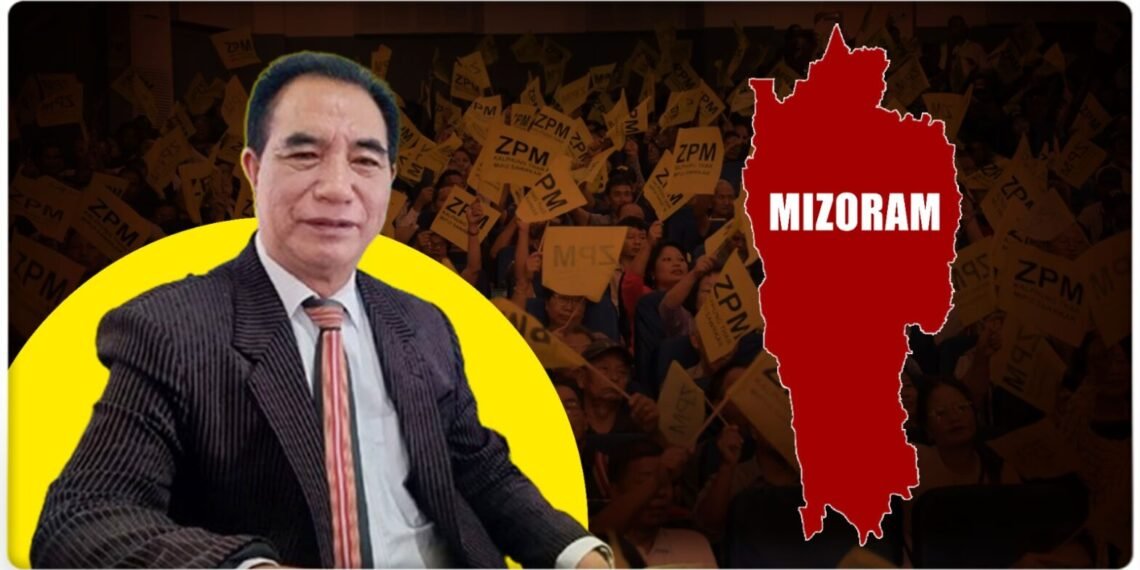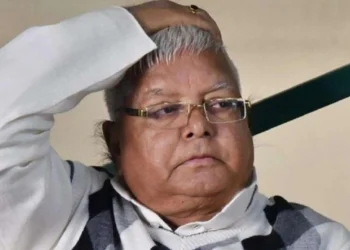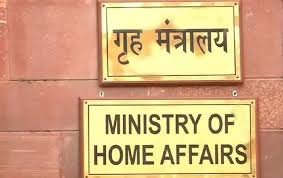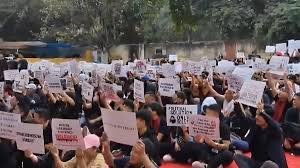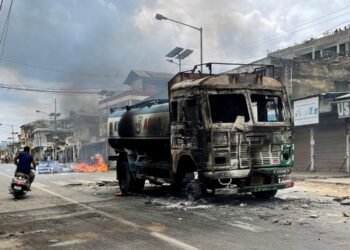From Zokhawthar to Serchhip, thousands of Chin refugees are being housed in Mizoram’s relief camps and villages. Despite limited resources, the state and its people are extending aid, hope, and home.
By Navin Upadhyay
July 9, 2025– As the crisis in Myanmar deepens, thousands of people from the country’s Chin State have found shelter in Mizoram, bound by blood, culture, and history. In recent weeks, a fresh wave of refugees has crossed the India-Myanmar border, driven not just by military oppression but by violent clashes between rival Chin rebel groups. These families—many of them women, children, and elderly—have been forced to flee burning villages and factional gunfire in search of safety. Mizoram, despite its limited resources and lack of central support, has opened its doors without hesitation.
The renewed influx began in late June when fighting broke out between armed groups within the Chin resistance movement, especially between the Chinland Defence Force (CDF) and the Chin National Army (CNA). What began as a united front against Myanmar’s military junta has splintered into bitter internal conflict. Villages such as Leilet, Singai, Selawn, and Satawm saw armed confrontations, with reports of homes being looted and burned. Caught in the crossfire, civilians began to flee toward the Indian border.
READ: Arambai Faces the Heat: 8 Cadres Held for Attack on ASP
By July 8, over 6,000 people had entered the town of Zokhawthar in Champhai district, a well-known crossing point between India and Myanmar. Another 700-plus refugees arrived in Vaphai and Saikhumphai, with smaller groups spreading out to villages like Farkawn, Thingsai, and Hrianghmun. Mizoram government officials estimate that over 32,000 Myanmar nationals are now sheltering in the state, scattered across 11 districts, including Champhai, Siaha, Serchhip, Hnahthial, Saitual, Lawngtlai, and Aizawl.
Unlike other parts of India, Mizoram’s relationship with the Chin people is not foreign—it is familial. Both groups belong to the larger Zo ethnic group, sharing language, customs, and ancestry. Many Mizos refer to the refugees as “brothers and sisters” and treat them accordingly.
A recently circulated video reveals a distressing scene: hundreds of citizens from Myanmar, including vulnerable elderly individuals and children, are fleeing Rihkhawdar, a border town to Mizoram state. This mass migration is driven by a sudden and aggressive attack from the Chin… pic.twitter.com/KOdmVyoMY4
— Chindwin News Agency (@TheChindwin) July 7, 2025
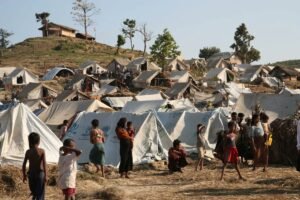
Relief camps, many of them makeshift structures built from bamboo and tarpaulin, have been set up near the border. In Zokhawthar, local churches and village councils have established food distribution lines, temporary schooling for children, and rudimentary health centres. Medical support is being provided at the Zokhawthar health centre and Champhai District Hospital, while more serious cases are referred to Aizawl Civil Hospital. In several places, refugees are staying not in camps but inside the homes of Mizo families, continuing a tradition of informal hospitality that dates back to earlier waves of displacement.
READ: Indian Nurse Nimisha Priya Set to Be Executed in Yemen on July 16
Refugee children have been admitted to local government schools, often studying alongside Mizo students. For adults, employment options are limited, but some have found work as day labourers in jhum (slash-and-burn) cultivation or construction sites, earning wages between ₹340 and ₹350 per day. Others assist in agricultural fields or volunteer in community kitchens preparing food for fellow refugees.
Civil society organizations are playing a vital role in maintaining order and dignity. The Young Mizo Association (YMA), a powerful community group, has taken the lead in ensuring that the refugees are well cared for. It has also begun coordinating with refugee leaders to ensure legal compliance—advising them not to misuse Indian identity documents, engage in cross-border travel, or get involved in unlawful activities. “We are helping them, but we are also setting boundaries,” said a YMA volunteer in Champhai. “This hospitality must not be misused.”
To better manage the situation, the Mizoram government has announced that starting this month, biometric registration of all refugees will be conducted under the Foreigners’ Identification Portal, a system approved by the Ministry of Home Affairs for tracking foreigners. Officials say this will not only help in aid distribution but also prevent duplication and misuse of documents. So far, over 32,419 Myanmar nationals have been identified for registration.
The government has warned that repeat violations of local rules—including misuse of refugee status or involvement in illegal activities—may lead to confiscation of identity documents or even prosecution under Indian laws.
Despite these challenges, Mizoram continues to offer help where it can. Chief Minister Lalduhoma has repeatedly stated that the people of Mizoram will not abandon the Zo refugees. His administration has ignored repeated advisories from the Union Ministry of Home Affairs discouraging the accommodation of “illegal migrants,” choosing instead to uphold what many in the state see as a moral and cultural responsibility.
READ: Pulwama Bomb Material Bought on Amazon, Says FATF in Explosive Report
“In Delhi, they see them as foreigners. Here, we see them as family,” a senior government official told PowerCorridors.in.
International humanitarian organizations have praised Mizoram’s efforts, though many are unable to operate directly due to India’s strict policies on foreign involvement in internal refugee situations. Still, the efforts of churches, student groups, and ordinary citizens have created a patchwork of support that continues to hold.
As the conflict in Myanmar escalates and peace remains elusive, Mizoram’s quiet resilience and compassion stand out. In a region marked by strife and separation, the state has become a symbol of solidarity—its people choosing to build bridges across borders, not walls.


